Meet Judy Gichoya, Doctor and Developer
To highlight the people behind projects we admire, we bring you the GitHub Developer Profile blog series. Judy Gichoya is a medical doctor specializing in radiology, but she’s also an…
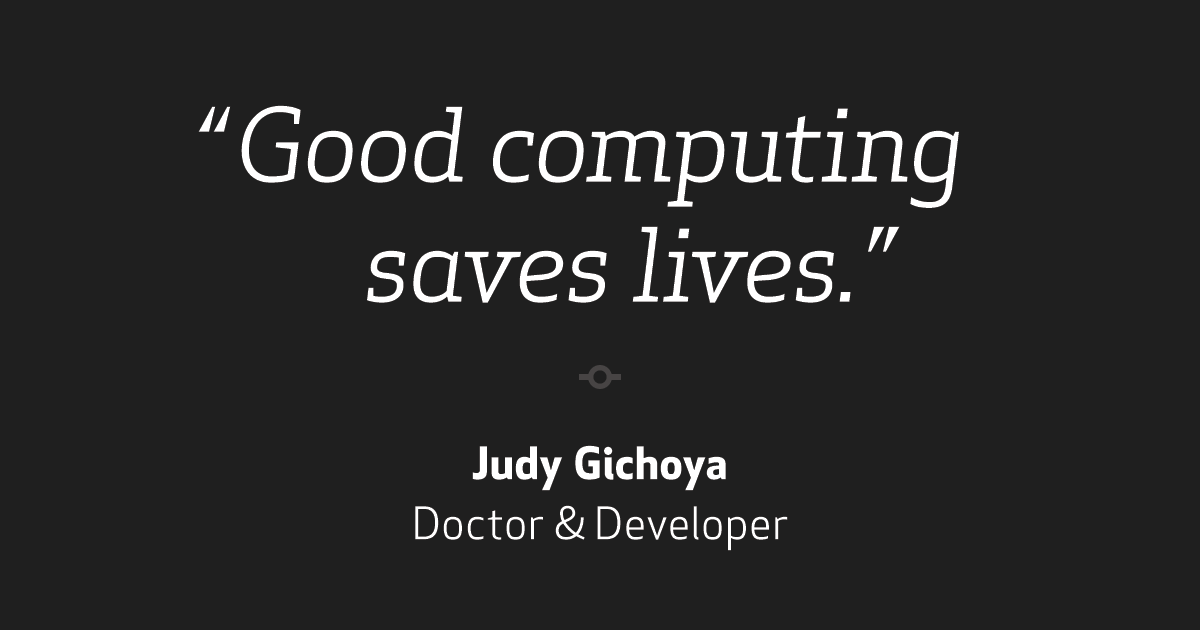
To highlight the people behind projects we admire, we bring you the GitHub Developer Profile blog series.
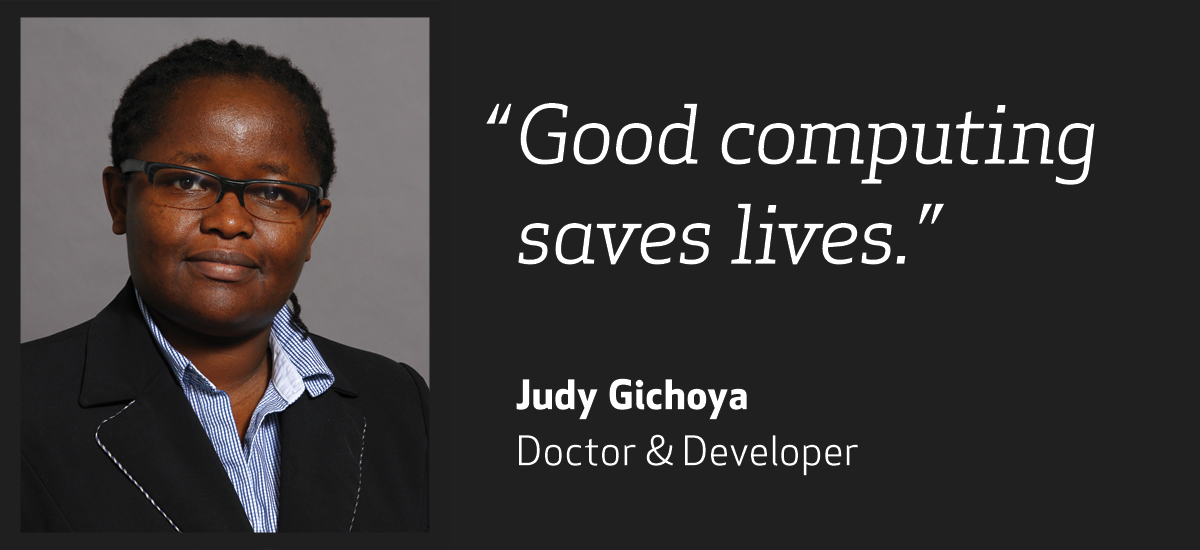
Judy Gichoya is a medical doctor specializing in radiology, but she’s also an experienced programmer who is accelerating the growth of OpenMRS. With a mission to improve healthcare delivery in resource-constrained environments, OpenMRS is coordinating a global community to create a user-driven, open source medical record system platform that helps ease the work of health care providers. We asked Judy to share the story of how she became a developer, and what she’s learned from her work.
Erin: How long have you been developing software?
Judy: In 2001 I was enrolled at a local college in Nairobi to learn accounting when a family doctor noted that it would be more helpful for me to learn technology-related courses. I dropped off accounting and used the money that I had to enroll into IMIS, which taught technology and management concepts. I was required to work on a project in either Pascal or Visual Basic, and that’s how I started programming. The challenge with being a student at this point was that we did not have enough teachers who understood programming, so most of the work that I did was self-taught by following tutorials on the Internet.
In 2003 I joined medical school and subsequently kept programming. I needed some money for school fees and joined a local company where in the evening after school I assembled their desktops. I assembled close to 10 computers every evening and hence got a good feel of the range of hardware available. I continued to learn more on programming, focusing on Java at that point. Around 2007 when I was doing my clinical rotations, the number of patients we treated with HIV-AIDS overwhelmed me, and I started wondering how the data for the care would be organized. A local nonprofit organization called AMPATH was starting to explore the use of OpenMRS, an open-source medical record system to help manage the patients and that’s how I got involved.
Erin: What programming languages do you use?
Judy: I started off using Java, but that can be a difficult language to learn in a developing country as it’s hard to find good teachers and mentors. I moved to using Python, Angular JS and various HTML5 technologies, and I wish I had made this move earlier. I am learning Node JS and tinkering with machine learning for some data analysis that I want to do in radiology.
Erin: Who did you look up to in your early days of software development?
Judy: A developer called Ben Wolfe, who was working on OpenMRS in the US, visited Kenya and provided local training to interested people. I found him very inspiring and knowledgeable. Doctors who write code have always surrounded me, and so it was a natural fit for me once I graduated as a medical doctor to continue writing code. I have interacted with many physicians who continue to do that both in the U.S. and worldwide. We all know diversity issues are a big problem, and I cannot say that I had any woman to look up to or work with when I started out.
Erin: Tell us about your journey into the world of software development
Judy: The very first time I saw a computer was in high school. We received a donation of 10 computers running Windows 3.1 for a computer lab that was used by more than 300 students. The school was looking for some volunteers to learn computers, and I jumped on the opportunity. This provided for guaranteed time using the computers, but my Agriculture teacher was very disappointed and thought it was a big mistake. We shared one teacher across the whole province, which meant several schools relied on him to teach a few days every month.
We were falling behind, so I started to study ahead of everyone else to help the 10 students who were going to seat a final examination in computers in order to graduate from high school. This experience sufficiently enabled me to be self driven in personalized learning, and taught me how to maximize use of available resources.
I had close to US$200 saved after graduation (actually from selling chicken). I bought a second-hand computer and took it home. We did not have electricity in my village home and I had to hide it from my dad who would not approve. I set up my computer in my uncle’s house would go there and use it and then go back home.
When it finally came time to do programming, I modified a ‘hello world’ application to be ‘hello Judy’.
Erin: What resources did you have available when you first got into software development?
Judy: In 2002 while pursuing IMIS certification, Strathmore University had several computer labs that I could use, furnished with Internet. I made friends along the way who were interested in programming and so we had a good support group that could help each other.
When I started working at OpenMRS, their community was the biggest resource for helping me get started with Java programming. They were available on IRC and Google groups and once I learned how to use the Wiki to search previously-asked questions and ‘how to’ pages, things got a little better. Despite the experience that most open-source products are poorly documented, the large and vibrant OpenMRS community contributed a lot to my learning.
Erin: What have you learned as a developer?
Most of my work has been around medical record systems, and I can say that good computing saves lives. What has happened over the last few years is how remarkably easy it’s become to develop software. And therefore the developer needs to be integrated within an ecosystem that’s trying to tackle a problem whether it’s business or for impact, and this is the only way I think to be relevant.
There have been lots of changes of perception about developers. Initially there was a myth that developers were weirdos, but now you know developers have become celebrities. Moreover there is lots of hype for looking for the next Google or the next Facebook and I think it’s easy for other people to get caught up in the circus.
Erin: Is there any advice you’d give someone just getting into software development or open source?
Judy: Looking back on my experience, I would say stay passionate about what you care about and be persistent. Open source is not easy as you know, your questions can get answered two weeks later, or sometimes never answered, and so persistence is key. For those who are worried about income or business, there is a lot of opportunity in open source.
If you were starting out specifically in a limited resource setting, I would encourage you to learn languages that take a shorter time to become proficient in, and where you have available resources to make you successful.
Erin: Can you share some background on OpenMRS and how it’s changing global healthcare?
Judy: Around 2007, a group of 4 physicians working in global health in Kenya and Rwanda came together at the Medinfo San Francisco conference during break in a café to figure out a solution to scale up providing care in their countries. On napkins, they brainstormed the first data model that would lead to OpenMRS. Three developers initially worked on the project, but since day one, there was a strong desire to open source the project that led to a community of friends growing around OpenMRS.
Our experience is that people wanted tools to use that were local to their problems, and OpenMRS provided a starting point for them to tackle their specific problems. We had some academicians who had grants that were looking at health technology adoption and assessment in various countries. They never recommended OpenMRS, but the local initiatives picked up OpenMRS as the tool to use to get started. This led to several national implementations of OpenMRS including Rwanda, Kenya, Vietnam, Uganda, and Mozambique with more countries increasingly adopting OpenMRS to provide health care.
Erin: Tell us a bit about the community that is contributing to OpenMRS. How has it changed over the years? What are some urgent needs you have?
Judy: What started off as three developers working on OpenMRS full-time has resulted into this large community. Our community is organized around implementers, people who do not necessarily have development expertise but use our software, and developers who actively write code for OpenMRS. We have developers from all over the world as we are in use in over 42 countries (https://atlas.openmrs.org/).
One thing we have not been able to do well has been to track forked off code contributions. Every month we have a surprise article or new development /use case of OpenMRS that we were not aware of. I guess this can be considered a success in the open source community. But it would be good to convince people who have forked code to contribute back to the community.
Running our diversity statistics was rather embarrassing since this is an area we lag behind in. We have organized developer levels that people can work towards and we had no /dev/5 developers who were female. We need more people working on OpenMRS, and are working towards a certification program powered by open source learning. We still are looking for funding to support our MOOC launch. Most importantly, our mission is that information is care. Most of the areas where we work have very limited resources, and we only tackle one end of the big global health problem by providing software. We need resources and partners to help us accelerate tackling the health problem in limited resource settings.
Erin: Where do you see the future headed for open source software in healthcare?
Judy: As we grow older and people live longer, caring for patients is increasingly more complex. In developing countries, open source technologies support leapfrogging through the health divide to take care of the high burden of communicable and noncommunicable diseases. For developed countries, the health care data is locked into vendor systems and doctors cannot get evidence by quickly searching the data. For example, I am using OpenMRS to run a disease registry to track outcomes of patients that receive treatment with Yttirum 90 for advanced liver cancer in the US. Before introducing this project, a solution had been sought for years and required a huge capital cost. I see open source playing a big role in these fields to provide such flexibility
Learn more about Judy and her work on her website, or get in touch on Twitter.
Written by
Related posts
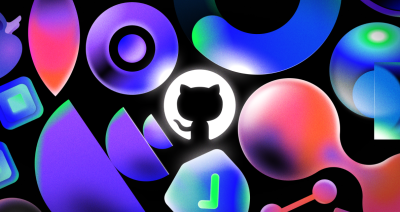
Apply now for GitHub Universe 2023 micro-mentoring
As part of our ongoing commitment to accelerate human progress through Social Impact initiatives, we’re offering students 30-minute, 1:1 micro-mentoring sessions with GitHub employees ahead of Universe.
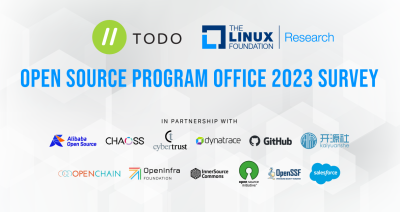
The 2023 Open Source Program Office (OSPO) Survey is live!
Help quantify the state of enterprise open source by taking the 2023 OSPO survey.
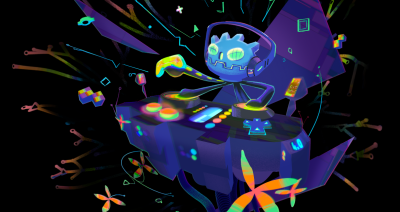
Godot 4.0 Release Party 🎉
We are delighted to host the Godot 4.0 Release Party at GitHub HQ on Wednesday, March 22 from 6:30 pm to 9:30 pm. And you’re invited!